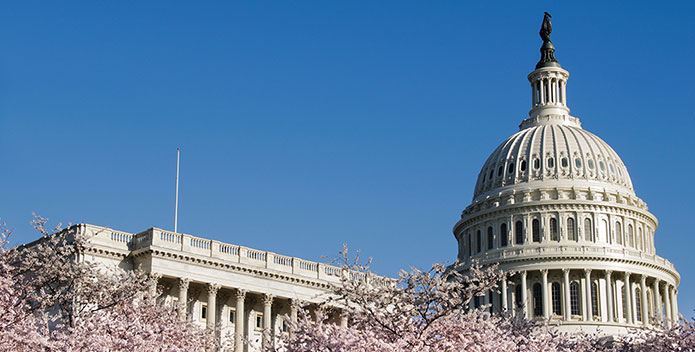President-Elect Joe Biden and Vice President-Elect Kamala Harris will take office on January 20 at a critical time for the Chesapeake Bay. The six states of the Bay watershed and the District of Columbia have only four years left to adopt the pollution controls the jurisdictions committed to implementing to restore the Bay and its waterways.
That’s not a lot of time to finish a complicated job. But thanks to the Chesapeake Clean Water Blueprint, we already know what local communities, states, and the federal government need to do.
To get there, the new administration will need to hit the ground running. We suggest the Biden team focus on these eight Bay-saving actions.
Return to using science to make regulatory decisions.
Clean water and clean air rules are essential to meeting the Blueprint’s targets for improving water quality in the Bay and its waterways. In January 2020, we wrote about how several regulatory re-dos could harm the Chesapeake Bay, including Waters of the United States, the National Environmental Policy Act, secret science, greenhouse gas emissions from transportation, and fine particulate standards. These changes threaten the success of the Blueprint and will exacerbate the damage climate change is already doing to the Bay ecosystem and watershed communities. We look forward to working with the Biden administration to restore these regulations and again rely on science to chart our course.
Take a comprehensive approach to tackling climate change.
The effects of climate change, including severe weather, higher temperatures, and sea level rise, are already hurting communities throughout the Bay’s 64,000-square mile watershed. In addition to the reductions the Blueprint calls for, scientists have determined Bay states need to eliminate another 6 million pounds of nitrogen and 500,000 pounds of phosphorous by 2025 to offset the effects of climate change on the Bay region. A comprehensive approach encompasses addressing climate change through economic, agricultural, and environmental justice policy, along with strengthening limits on planet-warming greenhouse gas emissions and helping communities adapt to and mitigate climate change effect.
Give farmers in Pennsylvania and around the watershed more support for conservation practices.
Assisting watershed farmers, particularly in Pennsylvania, to implement best management practices on their land is one of the most cost-effective way to reduce excess pollution running off their fields and pastures into waterways that feed the Bay. Sharing the cost and providing technical assistance for conservation measures like planting cover crops on farmland or trees along stream banks also helps improve the quality of local creeks and streams that supply water to their farms.
Invest in on-the-ground restoration projects.
Now more than ever, our federal government must make critical investments to protect and enhance our natural resources. Numerous federal agencies have a role in protecting and conserving the Chesapeake Bay watershed, all coordinated through the EPA’s Chesapeake Bay Program. Together, these agencies support on-the-ground restoration projects, such as help farmers enhance conservation practices on their land, improve wastewater infrastructure, carry out large-scale oyster restoration projects in the Bay, and educate the next generation on watershed sciences. The Biden administration must continue to invest more in these programs, which are essential to saving the Bay and enjoy broad, bipartisan support.
Focus on our nation’s water infrastructure.
Cities and towns need generous federal funding to improve their wastewater treatment technology, help treatment plants adapt to climate change, and ensure low-income customers can afford their services. Infrastructure investments like these, combined with underwriting new ways for municipalities to manage stormwater pollution and helping farmers control runoff of excess fertilizer and sediment from their land, will pay dividends that far exceed the up-front costs.
Promote environmental justice.
Just as biodiversity is the key to a thriving ecosystem, human diversity is the key to saving the Bay. Clean water, clean air, and a safe environment are rights we all share. The Biden administration must ensure all watershed residents, including low-income communities and communities of color, can enjoy these rights. Doing so includes investing in environmental justice communities, incorporating their input into making federal policy decisions, and not letting pollution from multiple sources accumulate in disadvantaged communities. This also means making sure all communities benefit from natural solutions like restoring wetlands and planting trees to guard against storm surges, alleviate excessive heat in urban areas, and otherwise cope with the effects of climate change.
Help crucial Bay industries bounce back from the pandemic.
Small businesses across the watershed, including shellfish growers and family farmers, have suffered tremendously since the U.S. economy collapsed with the rise of the novel coronavirus pandemic. The new administration must act quickly to deliver the financial support these folks need to get back on their feet.
Helping them recover won’t just recharge the Bay region’s economy. It will also boost efforts to save the Bay. When oyster growers prosper, they raise more pollutant-filtering bivalves. Supporting farmers who want to adopt conservation practices like fencing livestock out of streams and planting trees on stream banks means keeping harmful nutrient runoff out of local waters, and ultimately the Bay.
Provide jobs and save the Bay by enhancing Conservation Corps programs.
As our economy begins to recover from the pandemic, reinvigorating the Conservation Corps would build on the historic successes of the Great Depression-era Civilian Conservation Corps and help restore the Bay at the same time. A revitalized Conservation Corps could employ young people and folks who are out of work to restore forests and parks, rebuild coastlines, help farmers adopt soil and water conservation measures, and clean up abandoned mines. These and other projects will benefit the Bay watershed while improving our region’s resiliency to climate change and putting jobless residents back to work.
This is a serious to-do list, we know. But the Biden administration can count on the Chesapeake Bay Foundation and supporters like you to help them transform these recommendations into reality. So let’s get started!




